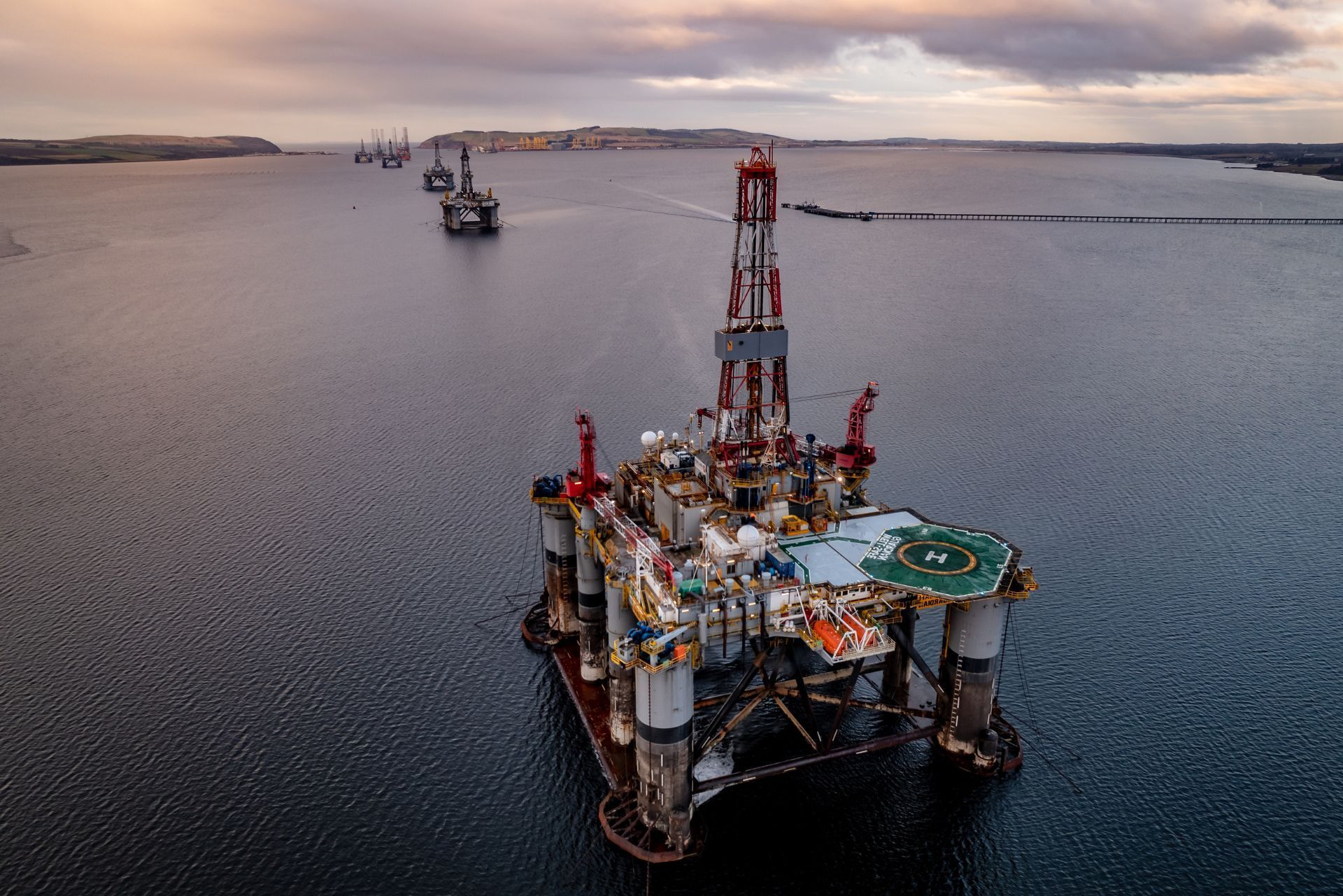Top 3 Recommended Policies

In the complex and high-risk world of offshore drilling and subsea operations, blowout prevention is a critical safety and financial concern. Businesses involved in these activities must not only invest heavily in advanced blowout preventer systems but also secure comprehensive insurance coverage to mitigate potential losses. As the global business insurance market continues to expand, expected to reach $8.4 trillion by 2027, understanding the nuances of blowout prevention business insurance is more important than ever for companies operating in this sector. Industry forecasts highlight steady growth, emphasizing the increasing role of insurance in managing operational risks.
This article explores the essentials of blowout prevention business insurance, including the risks it covers, recent trends in insurance pricing, and strategies for resilience in an evolving market landscape. Whether you are a business owner, risk manager, or industry professional, this guide will provide valuable insights into protecting your operations against one of the most challenging hazards in the energy sector.
Understanding Blowout Prevention and Its Business Risks
Blowout preventers (BOPs) are critical safety devices designed to seal, control, and monitor oil and gas wells to prevent uncontrolled releases of hydrocarbons. Failures in these systems can lead to catastrophic environmental damage, operational shutdowns, and enormous financial losses. A recent study analyzing 1,312 failure records from the International Association of Drilling Contractors' RAPID-S53 database sheds light on the common failure scenarios of subsea blowout preventer systems, highlighting the complexity and seriousness of these risks. The study revealed that mechanical failures, human errors, and inadequate maintenance practices are among the leading causes of blowout incidents, underscoring the need for rigorous training and adherence to operational protocols in the industry.
For businesses, the consequences of a blowout event extend beyond immediate physical damage. They may face regulatory penalties, reputational harm, and costly litigation. Therefore, securing specialized insurance coverage that addresses these unique risks is essential. This form of insurance typically covers equipment damage, business interruption, environmental liabilities, and third-party claims related to blowout incidents. Additionally, companies may need to navigate the complexities of federal and state regulations that govern drilling operations, which can vary significantly by region. Understanding these regulatory landscapes is crucial for compliance and can significantly affect insurance premiums and coverage options.
The Scope of Blowout Prevention Insurance Coverage
Blowout prevention business insurance is designed to provide financial protection against a range of perils associated with drilling operations. Coverage often includes:
- Property Damage: Repair or replacement costs for damaged blowout preventer equipment and related infrastructure.
- Business Interruption: Compensation for lost income due to operational downtime following a blowout or equipment failure.
- Environmental Liability: Costs related to environmental cleanup, fines, and third-party damages resulting from spills or leaks.
- Legal and Regulatory Expenses: Defense costs and settlements arising from lawsuits or regulatory actions.
Given the high stakes, many companies also invest in risk management programs and regular maintenance to reduce the likelihood of failures and claims. These proactive measures often include comprehensive training for personnel, routine inspections of BOP systems, and the implementation of advanced monitoring technologies that can detect early signs of potential failures. Furthermore, businesses are increasingly adopting a culture of safety that prioritizes risk assessment and mitigation strategies, fostering an environment where safety is embedded into every operational decision. This not only helps in minimizing risks but also enhances the overall efficiency and reliability of drilling operations.

Market Trends and Insurance Pricing Dynamics
The commercial property insurance market, which includes coverage relevant to blowout prevention equipment, has seen notable fluctuations recently. For the first time since 2017, commercial property insurance rates reversed their upward trend, dropping from a 3.4% increase in Q1 2024 to a 0.94% decrease in Q2 2024. This shift suggests a more competitive market environment and potential relief for businesses seeking coverage.
However, despite this positive development, many businesses remain cautious. According to recent data, 27% of business owners knowingly carry inadequate coverage, and 42% admit they would reduce coverage to lower premiums. This trend is concerning, especially in high-risk industries where underinsurance can lead to devastating financial consequences. The implications of such decisions can be dire, as inadequate coverage may not only leave businesses vulnerable to significant losses but also hinder their ability to recover swiftly from unforeseen events, such as natural disasters or operational failures.
Incorporating resiliency into insurance decision-making is increasingly recognized as a critical strategy. Martha Bane, leader of Gallagher’s Property practice, emphasizes that building resiliency can help mitigate risks and reduce costs over time. For companies in subsea drilling, this means not only purchasing insurance but also investing in robust safety protocols and equipment maintenance to minimize the likelihood and impact of blowouts. Furthermore, businesses are encouraged to engage in regular risk assessments and scenario planning to better understand their vulnerabilities and enhance their preparedness for potential incidents.
Impact of Supply Chain Challenges
Another factor influencing insurance and risk management strategies is the ongoing disruption in global supply chains. Over 60% of businesses report that their supply chains have not yet returned to normal post-pandemic, with many needing to place orders six months in advance to avoid delays. For companies relying on specialized blowout preventer components, these delays can exacerbate downtime risks and increase insurance claims related to business interruption. The ripple effects of supply chain issues can also lead to increased costs for raw materials and components, further straining budgets and potentially leading to more businesses opting for lower coverage limits as a cost-saving measure.
Moreover, the volatility in supply chains has prompted many businesses to reevaluate their supplier relationships and diversify their sourcing strategies. This shift not only aims to mitigate risks associated with single-source suppliers but also to enhance overall operational resilience. Companies are increasingly investing in technology and data analytics to gain better visibility into their supply chains, allowing them to respond more effectively to disruptions. As a result, the insurance industry may need to adapt its models and pricing structures to account for these evolving risk landscapes, ensuring that businesses can secure adequate coverage that reflects their unique operational challenges.
Addressing the Natural Catastrophe Protection Gap
Natural catastrophes pose an additional layer of risk for businesses involved in offshore drilling and subsea operations. The global natural catastrophe (NatCat) protection gap was estimated between $130 billion and $140 billion in 2021, with a significant concentration in North America and Europe. This gap represents the difference between economic losses from natural disasters and the amount covered by insurance.
For blowout prevention insurance, this gap underscores the importance of comprehensive coverage that accounts for both man-made and natural disaster risks. Severe weather events can trigger blowouts or complicate response efforts, amplifying potential damages. Business owners must assess their exposure to such risks and consider insurance products that incorporate natural catastrophe coverage. Furthermore, the increasing frequency and intensity of extreme weather events, driven by climate change, necessitate a proactive approach to risk management. Companies must not only evaluate their current insurance policies but also engage in scenario planning to understand potential future risks and their financial implications.
Leveraging Digital Channels and Partnerships
The insurance industry is evolving rapidly, with digital channels and embedded insurance options transforming how coverage is distributed and purchased. PwC reports that these trends are disintermediating traditional markets, offering new opportunities for businesses to access tailored insurance solutions more efficiently.
For companies seeking blowout prevention insurance, this means greater access to customized policies and risk management tools through digital platforms and partnerships. Embracing these innovations can streamline the insurance process and enhance coverage alignment with specific operational risks. Additionally, the integration of advanced analytics and artificial intelligence in underwriting processes allows insurers to better assess risk profiles and offer more competitive premiums. This technological shift not only benefits insurers but also empowers businesses to make informed decisions about their insurance needs, ensuring that they are adequately protected against the unique challenges posed by offshore operations and natural catastrophes.
Best Practices for Managing Blowout Prevention Insurance
Effective management of blowout prevention insurance involves a combination of strategic planning, risk assessment, and continuous improvement. Businesses should regularly review their insurance policies to ensure adequate coverage levels and alignment with evolving operational risks. This proactive approach not only helps in identifying gaps in coverage but also allows companies to adapt to changes in regulations and industry standards that could impact their insurance needs.
Engaging with experienced insurance brokers and risk consultants can provide valuable insights into market conditions and emerging threats. These professionals can help businesses navigate complex policy language and ensure that they are not only compliant but also fully protected against potential liabilities. Additionally, investing in employee training, equipment maintenance, and emergency response planning strengthens overall resilience and can positively influence insurance terms and premiums. Regular drills and simulations can prepare teams for real-life scenarios, thereby reducing the likelihood of incidents that could lead to costly claims.
Balancing Coverage and Cost
While cost considerations are important, underinsuring can expose businesses to catastrophic financial losses. The tendency of some business owners to cut coverage to lower premiums should be approached with caution, especially in high-risk industries. A balanced approach that prioritizes comprehensive protection while exploring cost-saving measures, such as bundling policies or implementing risk mitigation strategies, is advisable. For instance, companies might consider investing in advanced blowout prevention technologies that not only enhance safety but can also lead to lower insurance premiums over time due to reduced risk profiles.
Ultimately, blowout prevention business insurance is a critical component of a broader risk management framework. By understanding the specific risks, staying informed about market trends, and leveraging modern insurance solutions, companies can safeguard their operations and ensure long-term sustainability. Furthermore, fostering a culture of safety within the organization can enhance employee morale and productivity, as workers feel secure knowing that their employer is committed to protecting them and the environment. Regular communication about safety protocols and insurance coverage can also empower employees, making them active participants in the risk management process.

Conclusion
Blowout prevention business insurance plays a vital role in protecting companies operating in the subsea drilling and offshore energy sectors. With the global business insurance market growing steadily and recent improvements in commercial property insurance rates, now is an opportune time for businesses to evaluate and enhance their coverage.
Understanding the complexities of blowout risks, incorporating resiliency into decision-making, and navigating supply chain challenges are essential for effective insurance management. Furthermore, addressing the natural catastrophe protection gap and embracing digital distribution channels can provide additional layers of security and convenience.
By adopting best practices and maintaining a proactive stance on risk, businesses can mitigate the financial and operational impacts of blowout events, ensuring continuity and resilience in a demanding industry landscape. For more insights into the evolving insurance market, the
Insurance Information Institute provides valuable updates on commercial property insurance trends that may influence blowout prevention coverage.
Contact Us
Phone
Location
9595 Six Pines Dr, Suite 8210, The Woodlands, TX 77380

